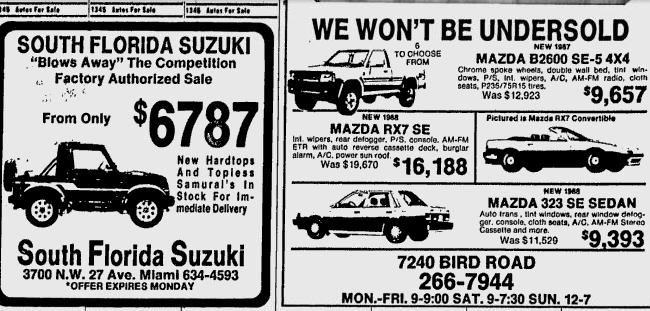#MiamiNews
Time Machine Challenge: What Would You Buy?
The Thanksgiving leftovers are still on the table when the Christmas tree goes up at the Kreutzer house. Wherever we go in the world I am determined that some traditions will survive and Christmas is one of the constants that my children can count upon no matter how hard it might be for Santa to find us some years. We have a fair amount of decorations, mostly indoor stuff, and when the season has ended I usually spend New Year’s Day pulling everything down and carefully wrapping each piece in its own individual piece of newspaper. The newspaper wrapping is just as important to me as the decorations themselves because I know that in the years to come, those crumpled bits of newsprint will become little time capsules that will show where we were and what we thought was important. One thing I am always sure to include are the car ads.















Recent Comments